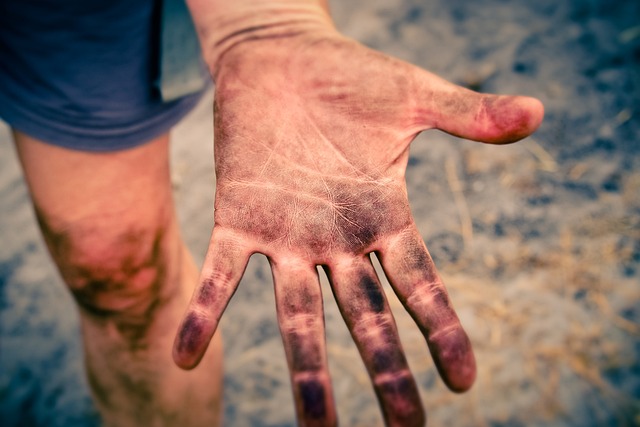Skin tags, medically known as acrochordons, are soft growths caused by friction and irritation. Many seek Skin Tag Removal Bradford for aesthetic reasons or discomfort. They can range from a few mm to 1 cm and are linked to factors like sun exposure, diabetes, or obesity. At-home removal methods include duct tape, salicylic acid, apple cider vinegar, and natural oils. Over-the-counter (OTC) treatments offer gentle, accessible solutions for minor tags. For more stubborn cases, professional Skin Tag Removal Bradford services provide stronger options, though they might not be as swift or affordable as OTC products. Always follow guidelines to prevent irritation.
Skin tags, those harmless yet often unsightly skin growths, affect many people. If you’re considering skin tag removal at home in Bradford, understanding your options is crucial. This guide delves into the world of skin tags, exploring their causes and types, while highlighting the potential health benefits of removing them. We offer a comprehensive overview of common home remedies, effective over-the-counter treatments, and even compare surgical vs non-surgical options. Learn about safety precautions, when to seek professional help, and essential post-removal care tips for successful skin tag removal Bradford solutions.
- Understanding Skin Tags: Causes and Types
- Why Remove Skin Tags? Potential Health Benefits
- Common Home Remedies for Skin Tag Disappearance
- Effective Over-the-Counter Treatments for Home Use
Understanding Skin Tags: Causes and Types
Skin tags, also known as acrochordons, are small, soft skin growths that typically appear as a result of friction or irritation on parts of the body where skin rubs against itself. They can vary in size, ranging from a few millimetres to around 1 centimetre, and often resemble little tags or pieces of loose skin. Despite their harmless nature, many people opt for skin tag removal due to aesthetic concerns or discomfort caused by their presence.
There are several types of skin tags, each with its own cause: friction-related tags, which develop where skin rubs against itself; age spots, which can be a result of sun exposure; and those linked to conditions like diabetes or obesity. In Bradford and beyond, understanding these causes is the first step towards effective skin tag removal at home or considering professional treatment options.
Why Remove Skin Tags? Potential Health Benefits
Skin tags, though often harmless, can be a source of discomfort and self-consciousness for many individuals. Removing them at home is a popular choice for those seeking to address this issue discreetly. While some may consider it purely cosmetic, removing skin tags offers several potential health benefits. Firstly, getting rid of these tags can provide relief from irritation and friction, especially in areas like the neck or armpits where they can rub against clothing or other body parts.
Additionally, for individuals concerned about hygiene or potential infections, removing skin tags can reduce the risk of complications. In some cases, skin tags may harbor bacteria or become irritated, leading to discomfort and possible infection. By eliminating these tags, especially in areas prone to perspiration or moisture, people in Bradford can maintain better hygiene and overall well-being, making skin tag removal a worthwhile consideration for anyone seeking to enhance their quality of life.
Common Home Remedies for Skin Tag Disappearance
Many people opt for at-home remedies to address skin tags, particularly those seeking Skin Tag Removal Bradford. Before attempting any method, it’s crucial to understand that skin tags are generally harmless but may cause discomfort or become irritated. Common home treatments include using duct tape and applying salicylic acid, both of which aim to remove the skin tag by drying it out over time. Duct tape involves carefully adhering a small piece of medical-grade tape to the tag for several days, then gently removing it; this process is often repeated until the skin tag detaches. Salicylic acid, found in over-the-counter skincare products, can be applied directly to the skin tag, helping to soften and eventually shed the excess skin.
Another popular method involves using apple cider vinegar or tea tree oil, known for their antimicrobial properties. Soaking a cotton ball in either substance and gently applying it to the skin tag can help reduce its appearance over several weeks of consistent use. Additionally, some people find relief through natural remedies like garlic or castor oil, applied topically to stimulate blood flow and potentially speed up cell turnover. However, it’s essential to be patient and persistent with these methods, as results may vary, and consistency is key.
Effective Over-the-Counter Treatments for Home Use
When it comes to effective skin tag removal in Bradford, over-the-counter (OTC) treatments offer a convenient and affordable solution for those looking to get rid of these small skin growths at home. Many OTC products contain ingredients like salicylic acid or dermatologically tested creams that help soften and dissolve skin tags gently. These options are generally safe for most people but always check the instructions and warnings on the packaging to ensure they suit your needs.
For stubborn or larger skin tags, consider treatments with more potent active ingredients like 5% to 10% salicylic acid or 0.5% to 1% lactic acid. These formulations can be more effective but may require consistent application over several weeks for noticeable results. Remember, while OTC treatments are readily available and provide a good starting point, they might not work as quickly or intensely as professional procedures. Always follow the recommended usage guidelines to avoid potential skin irritation or side effects.
Skin tags, while often harmless, can be unsightly and uncomfortable. If you’re considering skin tag removal in Bradford, understanding your options is key. From home remedies like apple cider vinegar and duct tape to over-the-counter treatments and even natural methods like banana peels, there are numerous ways to tackle these small growths. However, for more persistent or painful cases, professional medical advice should be sought. Remember, safe and effective skin tag removal is achievable, whatever your chosen method.
